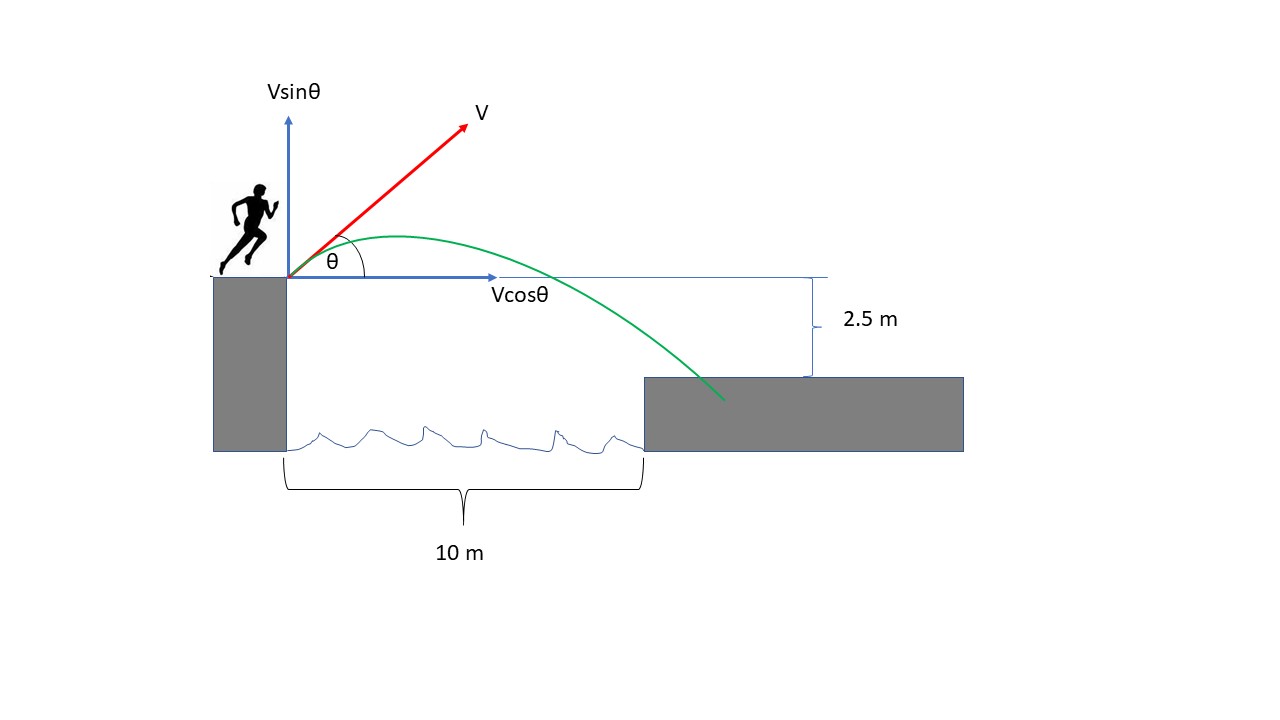Question #5c760
1 Answer
(a)
(b)
She will just make the bank at 10 m.
Explanation:
(a)
The expression for range is given by:
(b)

The key to this is to find the time of flight, which is common to both the vertical and horizontal components of motion:
Using the equation of motion:
If we set the launch point as the origin this becomes:
We can use the quadratic formula to solve this. Ignoring the -ve root this gives:
The horizontal component of velocity is constant and is equal to
She just makes it.

